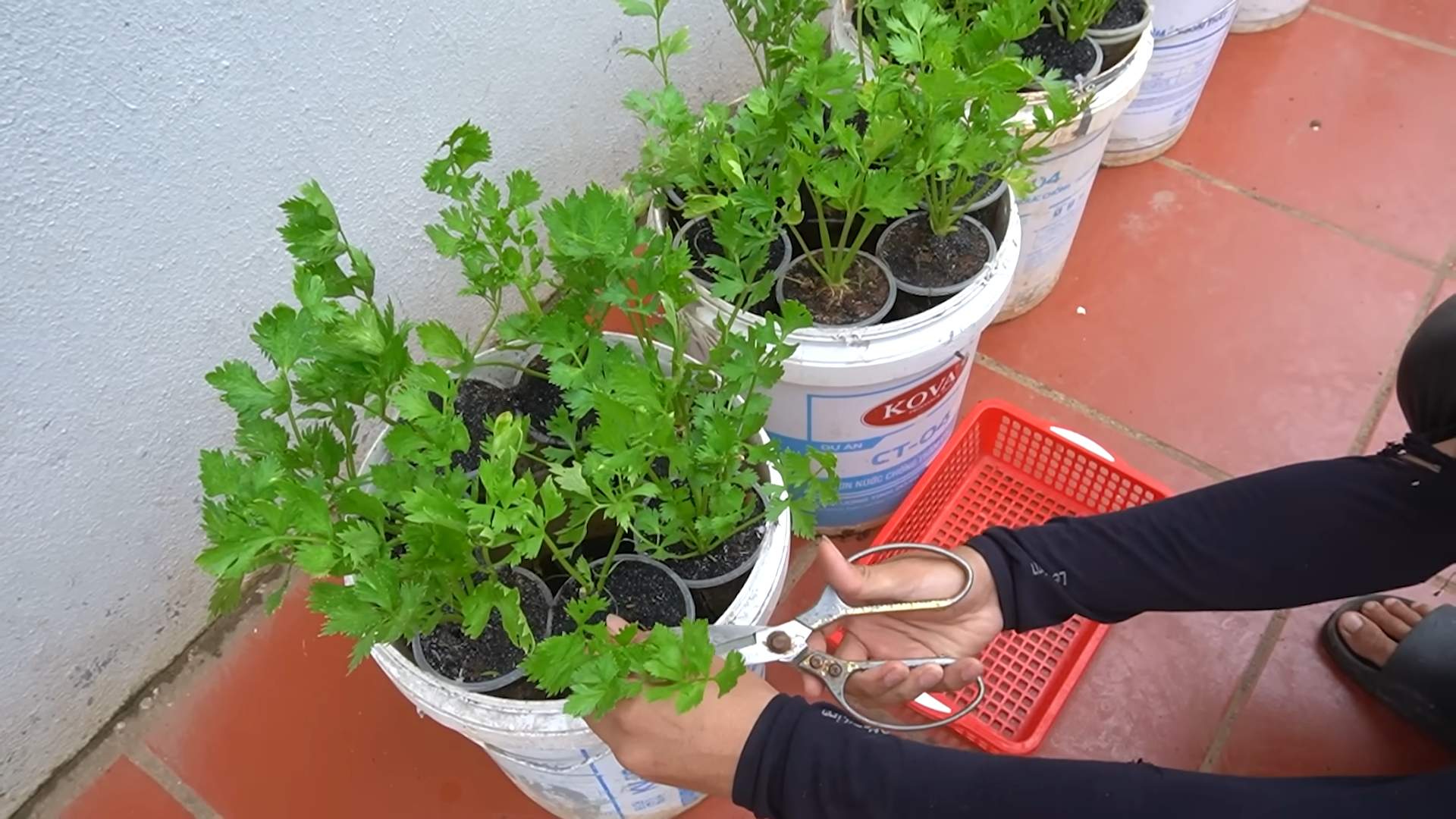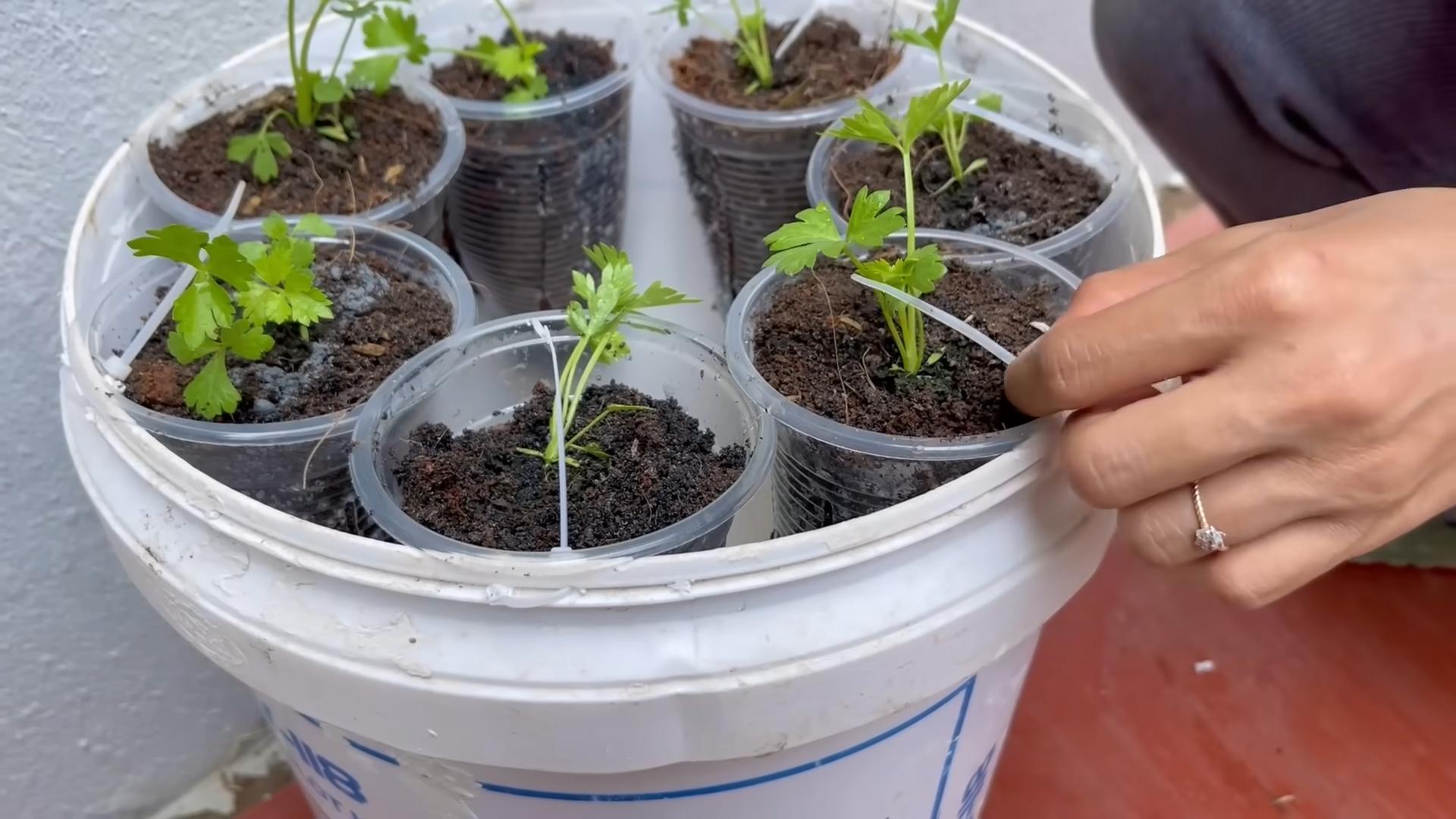Grow Celery Fast? Absolutely! Imagine harvesting crisp, crunchy celery from your own backyard, ready to be dipped in hummus or added to your favorite soup. It’s not just a dream; it’s an achievable reality with a few clever tricks and DIY hacks. For centuries, celery has been cultivated for its culinary and medicinal properties, dating back to ancient Greece and Rome where it was valued more for its leaves and seeds than its stalks.
But let’s be honest, store-bought celery can be a bit of a gamble – sometimes it’s fresh, sometimes it’s limp and bitter. That’s where this DIY guide comes in! I’m going to share some simple, effective techniques that will help you grow celery fast and enjoy a bountiful harvest. Whether you’re a seasoned gardener or just starting out, these tips will empower you to cultivate delicious, healthy celery right at home. Say goodbye to disappointing grocery store celery and hello to fresh, homegrown goodness!
This article is your go-to resource for unlocking the secrets to rapid celery growth. We’ll cover everything from seed starting to transplanting, watering, and pest control, ensuring you have all the knowledge you need to succeed. So, grab your gardening gloves, and let’s get started on this exciting journey to growing your own celery!

Grow Celery From Kitchen Scraps: A Beginner’s Guide
Hey there, fellow gardening enthusiasts! Ever find yourself tossing out the base of your celery stalk after chopping it up for a snack or soup? Well, stop right there! I’m going to show you how to turn that kitchen scrap into a brand new celery plant. It’s easier than you think, and it’s a fantastic way to reduce waste and enjoy fresh, homegrown celery.
This guide will walk you through the entire process, from prepping your celery base to transplanting it into soil and nurturing it to maturity. Get ready to be amazed at how simple and rewarding this DIY project can be!
What You’ll Need
Before we dive in, let’s gather our supplies. You probably already have most of these items on hand:
* A celery stalk base (about 2-3 inches from the bottom)
* A shallow dish or bowl
* Water (tap water is fine)
* A sunny windowsill or well-lit area
* Potting soil
* A pot or container (at least 6 inches in diameter)
* Optional: Liquid fertilizer (balanced formula)
Phase 1: Regrowing Celery in Water
This is where the magic begins! We’re going to coax those dormant cells in the celery base to start growing roots.
1. Prepare the Celery Base: Carefully cut the celery stalk about 2-3 inches from the bottom. Make sure the base is firm and the stalks are tightly packed together. Remove any loose or decaying outer stalks. You want a clean, healthy base to work with.
2. Place in Water: Fill your shallow dish or bowl with about an inch of water. Place the celery base, cut-side up, in the water. The water level should just cover the bottom of the base, but not submerge the entire thing. We want the cut end to be consistently moist.
3. Find a Sunny Spot: Place the dish with the celery base on a sunny windowsill or in a well-lit area. Celery needs plenty of light to grow, so aim for at least 6 hours of sunlight per day. If you don’t have a sunny windowsill, you can use a grow light.
4. Change the Water Regularly: This is crucial! Change the water every 1-2 days to prevent bacteria and mold from growing. Fresh water keeps the celery base healthy and encourages root growth. I usually do this first thing in the morning.
5. Observe and Wait: Now comes the patience part. Over the next few days, you should start to see small roots emerging from the bottom of the celery base. You’ll also notice new, small green leaves sprouting from the center. This is a sign that your celery is thriving! It typically takes about 5-7 days to see significant root growth.
Phase 2: Transplanting to Soil
Once your celery base has developed a good network of roots (about an inch or two long), it’s time to move it to soil. This will provide the celery with the nutrients it needs to grow into a full-sized plant.
1. Prepare Your Pot: Choose a pot or container that is at least 6 inches in diameter and has drainage holes. Fill the pot with high-quality potting soil. I like to use a mix that’s specifically formulated for vegetables.
2. Create a Planting Hole: Use your finger or a small trowel to create a hole in the center of the potting soil, deep enough to accommodate the celery base and its roots.
3. Carefully Remove from Water: Gently lift the celery base out of the water, being careful not to damage the delicate roots.
4. Plant the Celery Base: Place the celery base in the planting hole, making sure the roots are spread out. Cover the base with potting soil, leaving the top of the celery base (where the new leaves are growing) exposed.
5. Water Thoroughly: Water the soil thoroughly until water drains out of the drainage holes. This will help settle the soil around the roots and provide the celery with the moisture it needs.
Phase 3: Caring for Your Celery Plant
Now that your celery is planted in soil, it’s time to provide it with the care it needs to flourish.
1. Sunlight: Continue to provide your celery plant with plenty of sunlight. Aim for at least 6 hours of direct sunlight per day. If you’re growing your celery indoors, you may need to supplement with a grow light.
2. Watering: Celery needs consistent moisture to thrive. Water your plant regularly, keeping the soil consistently moist but not waterlogged. Check the soil moisture by sticking your finger into the soil. If the top inch feels dry, it’s time to water. I usually water every other day, but this will depend on your climate and the size of your pot.
3. Fertilizing: To encourage healthy growth, fertilize your celery plant every 2-3 weeks with a balanced liquid fertilizer. Follow the instructions on the fertilizer label. I prefer to use an organic fertilizer.
4. Pest Control: Keep an eye out for pests, such as aphids and slugs. If you notice any pests, you can try spraying your plant with insecticidal soap or neem oil. You can also hand-pick pests off the plant.
5. Harvesting: Be patient! It takes time for celery to mature. You can start harvesting individual stalks when they are about 6-8 inches long. Simply cut the stalks off at the base of the plant. The plant will continue to produce new stalks. You can also harvest the entire plant at once by cutting it off at the base.
Troubleshooting Tips
Even with the best care, you might encounter a few challenges along the way. Here are some common issues and how to address them:
* Celery base rotting: This is usually caused by using dirty water or not changing the water frequently enough. Make sure to use fresh, clean water and change it every 1-2 days.
* Slow growth: This could be due to insufficient sunlight, lack of nutrients, or poor soil. Make sure your plant is getting enough sunlight, fertilize it regularly, and use high-quality potting soil.
* Yellowing leaves: This could be a sign of overwatering or underwatering. Check the soil moisture and adjust your watering accordingly. Yellowing leaves can also indicate a nutrient deficiency, so try fertilizing your plant.
* Pests: As mentioned earlier, keep an eye out for pests and take action promptly.
Extra Tips for Success
* Choose a healthy celery stalk: The healthier the celery stalk you start with, the better your chances of success. Look for a stalk that is firm, crisp, and free of blemishes.
* Use filtered water: If your tap water is heavily chlorinated, consider using filtered water for regrowing your celery.
* Provide good air circulation: Good air circulation helps prevent fungal diseases. Make sure your plant is not overcrowded and that there is good airflow around it.
* Be patient: Growing celery from kitchen scraps takes time and patience. Don’t get discouraged if you don’t see results immediately. Just keep providing your plant with the care it needs, and you’ll eventually be rewarded with fresh, homegrown celery.
* Experiment with different varieties: There are many different varieties of celery, so experiment with different ones to find your favorite.
* Enjoy the process! Growing celery from kitchen scraps is a fun and rewarding experience. Take the time to enjoy the process and learn from your mistakes.
Growing celery from scraps is a fantastic way to reduce food waste and enjoy fresh, homegrown produce. With a little patience and care, you can easily transform a discarded celery base into a thriving plant. So, give it a try and see what you can grow! Happy gardening!

Conclusion
So, there you have it! Growing celery fast at home is not only achievable but also incredibly rewarding. Forget those limp, flavorless stalks from the grocery store. Imagine biting into crisp, intensely flavored celery that you nurtured from a humble base. This DIY trick transforms kitchen scraps into a thriving source of fresh produce, reducing waste and saving you money. It’s a win-win!
But why is this method a must-try? Beyond the obvious benefits of fresh, organic celery, this technique offers a unique connection to your food. You witness the miracle of regeneration firsthand, fostering a deeper appreciation for the natural world. It’s a fantastic project for families, teaching children about sustainability and the life cycle of plants. Plus, it’s just plain fun to watch your celery regrow!
Don’t limit yourself to just plain celery. Experiment with different varieties! Try growing red celery for a splash of color in your salads or Pascal celery for its classic, robust flavor. You can even use the regrown celery leaves to make flavorful pesto or add them to soups and stews for an extra layer of herbaceousness. Consider planting your regrown celery in a larger pot or directly in your garden for even bigger, more bountiful harvests. Adding a slow-release fertilizer formulated for vegetables can significantly boost growth and yield.
We encourage you to embrace this simple yet effective method for growing celery fast. It’s a game-changer for home cooks and gardening enthusiasts alike. Don’t be intimidated if your first attempt isn’t perfect. Gardening is a journey of learning and experimentation. The most important thing is to get started and observe how your celery responds.
Once you’ve experienced the joy of regrowing your own celery, we’d love to hear about it! Share your photos, tips, and stories in the comments below. Let’s create a community of celery-growing enthusiasts and inspire others to embrace this sustainable and delicious practice. What are you waiting for? Get those celery bases soaking and prepare to be amazed!
Frequently Asked Questions (FAQ)
How long does it really take to grow celery fast using this method?
While the term “fast” is relative, you can expect to see noticeable regrowth within a week. Within 2-3 weeks, you should have a substantial amount of new celery stalks and leaves. The speed of growth depends on factors like sunlight, temperature, and water quality. Providing optimal conditions will significantly accelerate the process. Remember, patience is key, and even if it takes a little longer, the reward of fresh, homegrown celery is well worth the wait.
What kind of celery works best for regrowing?
Generally, any type of celery you buy from the grocery store will work. However, organic celery is often preferred as it’s less likely to be treated with chemicals that might inhibit regrowth. Look for celery with a firm, healthy base and vibrant green stalks. Avoid celery that is wilted, discolored, or shows signs of rot. The fresher the celery, the better the chances of successful regrowth.
How much sunlight does the celery base need?
Celery thrives in bright, indirect sunlight. Avoid placing the celery base in direct sunlight, especially during the hottest part of the day, as this can scorch the delicate new growth. A spot near a window that receives morning sun or filtered afternoon sun is ideal. If you don’t have access to natural light, you can supplement with a grow light.
What kind of water should I use?
Tap water is generally fine, but if your tap water is heavily chlorinated, it’s best to let it sit out for 24 hours before using it to allow the chlorine to dissipate. Alternatively, you can use filtered water or rainwater. Change the water every 1-2 days to prevent bacterial growth and keep the celery base healthy.
When should I transplant the celery to soil?
Once the celery base has developed a good root system (about 1-2 inches long) and has a noticeable amount of new growth, it’s time to transplant it to soil. This usually takes about a week or two. Choose a pot that is at least 6 inches in diameter and fill it with a well-draining potting mix. Gently remove the celery base from the water and plant it in the pot, burying the roots and the bottom part of the base.
What kind of soil is best for growing celery?
Celery prefers a rich, well-draining soil that is high in organic matter. A good potting mix specifically formulated for vegetables is ideal. You can also amend your own potting mix by adding compost, peat moss, or other organic materials. Ensure the soil is loose and airy to allow for good root development.
How often should I water the celery after transplanting?
Keep the soil consistently moist, but not waterlogged. Water the celery when the top inch of soil feels dry to the touch. Avoid overwatering, as this can lead to root rot. A good rule of thumb is to water deeply and then allow the soil to dry out slightly before watering again.
Can I use fertilizer to help the celery grow?
Yes, fertilizing can help boost the growth of your celery. Use a balanced liquid fertilizer diluted to half strength every 2-3 weeks. Alternatively, you can use a slow-release fertilizer formulated for vegetables. Follow the instructions on the fertilizer package carefully to avoid over-fertilizing, which can damage the plant.
What if my celery starts to turn yellow or brown?
Yellowing or browning leaves can indicate a few different problems. It could be due to overwatering, underwatering, lack of nutrients, or exposure to too much direct sunlight. Assess the growing conditions and adjust accordingly. If the problem persists, try transplanting the celery to a new pot with fresh soil.
Can I grow celery indoors year-round?
Yes, you can grow celery indoors year-round, provided you provide it with adequate light and water. A grow light can be particularly helpful during the winter months when natural light is limited. Maintain a consistent temperature and humidity level for optimal growth.
Is it possible to grow celery from seed instead of regrowing from a base?
Yes, you can absolutely grow celery from seed. However, growing celery from seed is a much longer and more challenging process than regrowing from a base. Celery seeds are very small and require specific conditions to germinate. It can take several months to grow celery from seed to a harvestable size. Regrowing from a base is a much faster and easier way to enjoy fresh, homegrown celery.
How do I harvest the celery?
You can harvest the celery stalks as needed. Simply cut off the outer stalks near the base of the plant. The inner stalks will continue to grow. You can also harvest the entire plant at once if you prefer.
Are there any pests or diseases that affect celery?
Celery can be susceptible to certain pests and diseases, such as aphids, celery leaf miners, and fungal diseases. Inspect your plants regularly for signs of infestation or disease. If you notice any problems, treat them promptly with an appropriate organic pesticide or fungicide. Good air circulation and proper watering can help prevent many common celery problems.
Can I eat the celery leaves?
Yes, celery leaves are perfectly edible and have a strong celery flavor. They can be used in salads, soups, stews, or as a garnish. Don’t discard them! They’re a delicious and nutritious addition to your meals.




Leave a Comment